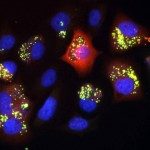Lien vers Pubmed [PMID] – 34265461
Lien DOI – S1198-743X(21)00381-510.1016/j.cmi.2021.07.007
Clin Microbiol Infect 2021 Nov; 27(11): 1601-1612
The fact that Mycobacterium leprae does not grow in vitro remains a challenge in the survey of its antimicrobial resistance (AMR). Mainly molecular methods are used to diagnose AMR in M. leprae to provide reliable data concerning mutations and their impact. Fluoroquinolones (FQs) are efficient for the treatment of leprosy and the main second-line drugs in case of multidrug resistance.This study aimed at performing a systematic review (a) to characterize all DNA gyrase gene mutations described in clinical isolates of M. leprae, (b) to distinguish between those associated with FQ resistance or susceptibility and (c) to delineate a consensus numbering system for M. leprae GyrA and GyrB.Data source was PubMed.Publications reporting genotypic susceptibility-testing methods and gyrase gene mutations in M. leprae clinical strains.In 25 studies meeting our inclusion criteria, 2884 M. leprae isolates were analysed (2236 for gyrA only (77%) and 755 for both gyrA and gyrB (26%)): 3.8% of isolates had gyrA mutations (n = 110), mostly at position 91 (n = 75, 68%) and 0.8% gyrB mutations (n = 6). Since we found discrepancies regarding the location of substitutions associated with FQ resistance, we established a consensus numbering system to properly number the mutations. We also designed a 3D model of the M. leprae DNA gyrase to predict the impact of mutations whose role in FQ-susceptibility has not been demonstrated previously.Mutations in DNA gyrase are observed in 4% of the M. leprae clinical isolates. To solve discrepancies among publications and to distinguish between mutations associated with FQ resistance or susceptibility, the consensus numbering system we proposed as well as the 3D model of the M. leprae gyrase for the evaluation of the impact of unknown mutations in FQ resistance, will provide help for resistance surveillance.

